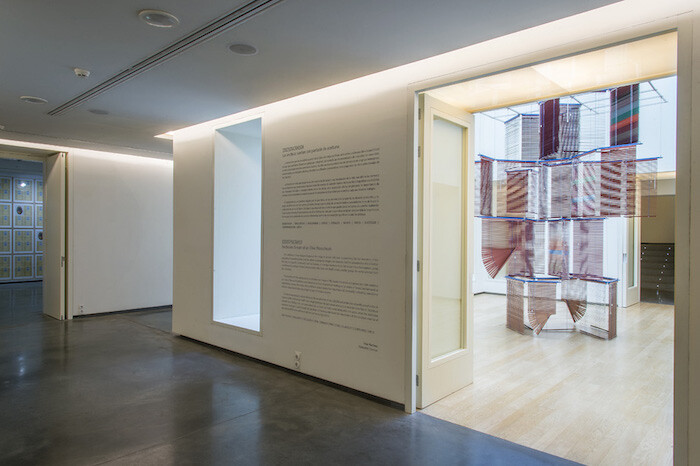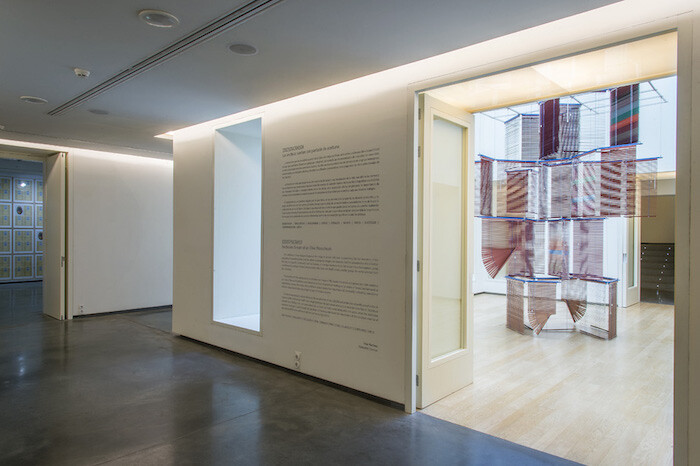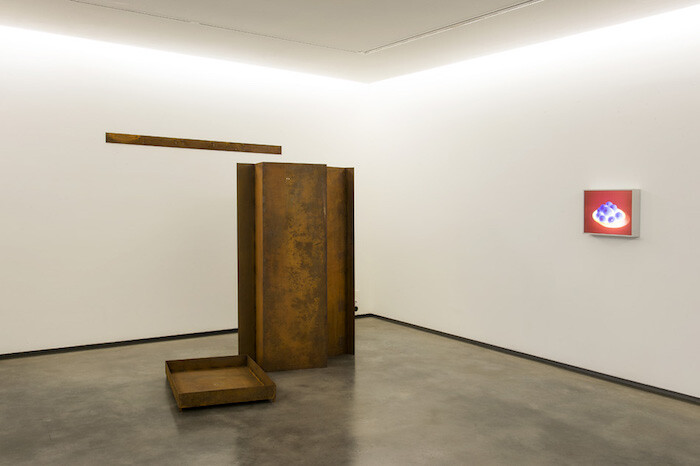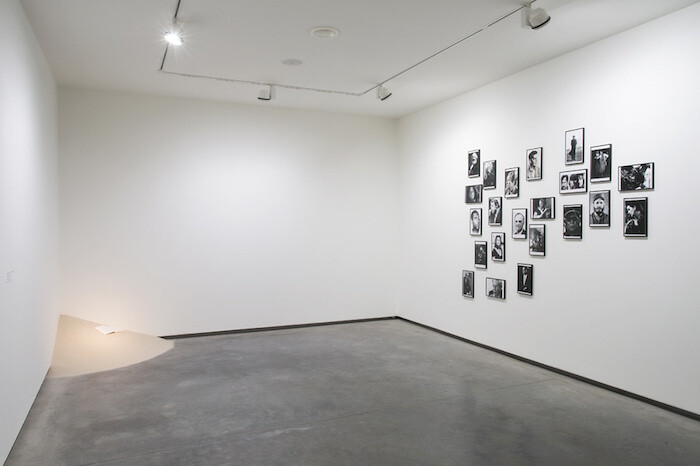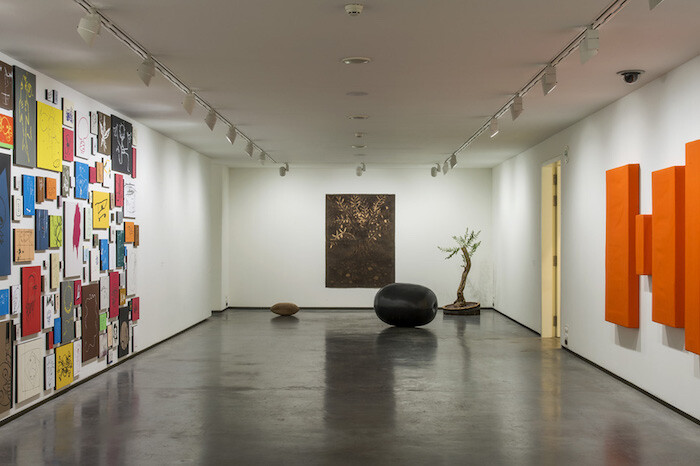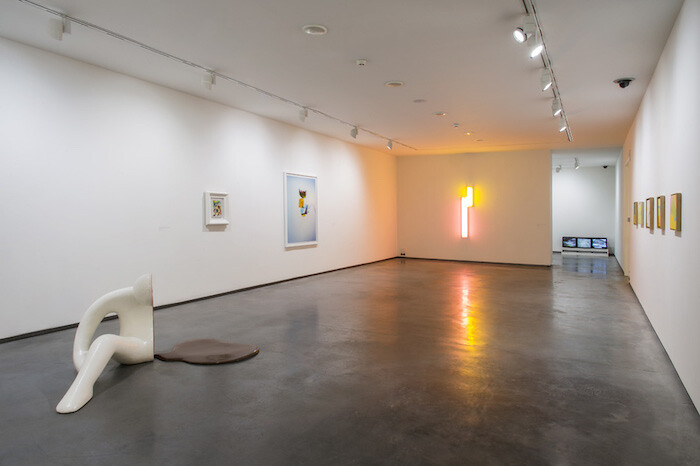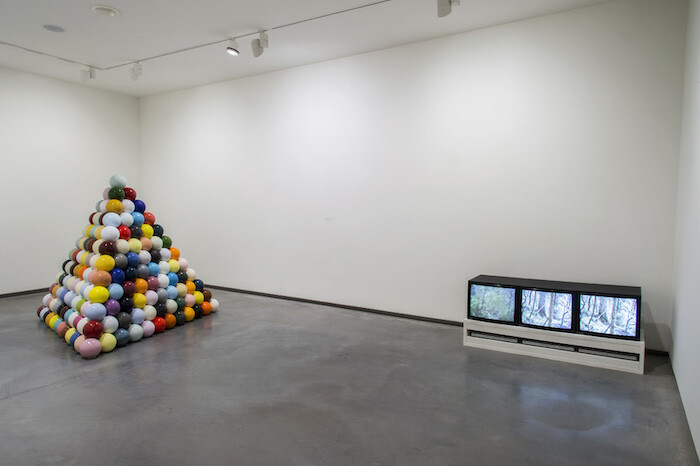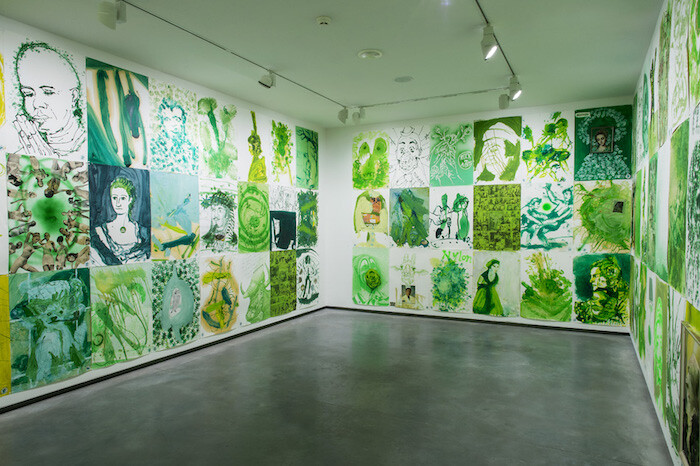“Anchovies Dream of an Olive Mausoleum” is the subtitle Chus Martínez has given to “Idiosyncrasy,” her new arrangement of the Helga de Alvear Foundation’s collection of work from the second half of the twentieth century, assembled over 50 years by the Madrid-based German-Spanish gallerist. By locating the foundation in the historic city of Cáceres and annually inviting external curators to propose new displays and hangings of the collection, Helga de Alvear is also offering it up as a laboratory, an experimental field where new ideas can be tried and tested.
Martínez takes full advantage of the occasion, starting with the show’s subtitle, which bears a clear statement. For there are two things fans of tapas (and Spanish art) should know: one, that in Spain popular refinement demands that olives, since time immemorial, be filled with anchovies at aperitivo time; and two, that this quote comes from Ramón Gómez de la Serna, or simply “Ramón,” the spiritual leader of Iberian surrealism, and a kind of Breton of the Spanish avant-garde. This is one of his “greguerías,” an untranslatable phrase coined by Ramón himself to describe the utterances which extract new meanings from unexpectedly juxtaposed words and ideas. And it’s precisely this game of anachronisms, of unlikely couplings, of sparks of meaning owing much to the “greguería,” which the curator has assembled (or disassembled) here from the collection understood as microcosmos.
This is, however, a serious game. In her introductory text, Martínez writes about the necessity of going beyond purely chronological criteria when looking back at twentieth-century art. And she puts it into practice in her arrangement, a case study in which each room places the work of wildly dissimilar artists side by side, like visual “greguerías,” bringing them into direct conflict with one another.
In the building’s central patio visitors are greeted, like a declaration of intent, by a magnificent Haegue Yang installation: an edifice assembled from soft Venetian blinds, Towers on String (2012) is at once solid and fragile, opaque and translucent. It could act as a perfect home for the portable, alternative museum Martínez is proposing. Echoes of, and nods to, other pieces are apparent as the visit proceeds: Hans-Peter Feldmann’s photographic panel Billy Bookshelves by Ikea (The Artist’s Library) (2007) is testament to the eclecticism of an artist who has always loathed art that aspires to the transcendental, and it’s no coincidence that it’s been hung next to a photo documenting Rhythm 10 (1973), Marina Abramovic’s mythologized performance based around knives and bloody hands, her face in an almost mystic-like state of enthrallment. The supposedly banal and the forcefully sublime face off.
Hierarchies are also blurred thanks to the curator’s dry, lucid humor: one show-stealing work is Alberto Peral’s Untitled (2003), a pyramid made from brightly colored spheres which creates an unexpected resonance with the soft yellows and rose-pinks emitted by Dan Flavin’s Untitled (1996) in the adjoining room. By walking through these rooms visitors agree to play the game, and accept the invitation to create for themselves a kind of counter-canon in which totems of modernity like Alexander Calder, conceptual artists such as Louise Nevelson or Dominique González-Foerster, or relatively forgotten figures such as the Spanish painter Bonifacio, briefly popular in the 1970s and 80s, succeed each other in a new order.
The synchronic and the chronological are substituted by the anachronistic and the uchronic. I am reminded of the possibility of “total reading” Jorge Luis Borges explores when writing about Franz Kafka: he rejects a linear view of literature, instead imagining a world in which writers who came after Kafka could become, in our imagination, his precursors. What is, for Borges, Kafka’s “idiosyncrasy”—the Kafkaesque—could be Ariadne’s thread, guiding us through the labyrinth of every possible reading. Perhaps it’s no coincidence that Martínez has retrieved that word from Borges’s text for the title of her exhibition, or that Ramón died in exile in Buenos Aires, where Borges had the chance to converse with him again, having met him in the twenties in Madrid. Who is influencing whom?
This exhibition’s “idiosyncrasy,” then, does not uphold canonical, historical, or formal criteria. What it does is propose alternative combinatory logical sequences, such as what Martínez calls the “theory of the supergroup”: the possibility of revitalizing the works by removing them from the formal and historical axis in which we are accustomed to contemplating them (and to overlooking them, after so much looking). The different ways in which they have been juxtaposed, hung, and arranged, and the location of the exhibition itself, in the heart of a place like Cáceres, are the blueprints of supergroups as explosive “greguerías” which allow one to seek new meanings, and free oneself from being tempted to make mechanical associations, to take comfort in an inept inertia.
Only if we force ourselves to reread the art of the past in a new way will we regain the capacity to imagine a more daring present, not limited to waiting for things to “go back to being as they were,” as Martínez writes in her accompanying text. Perhaps we might also note that anchovies should really stop seeking comfortable niches and mausoleums for themselves, and start dreaming of the open sea.
Translated from Spanish by Rahul Bery.
